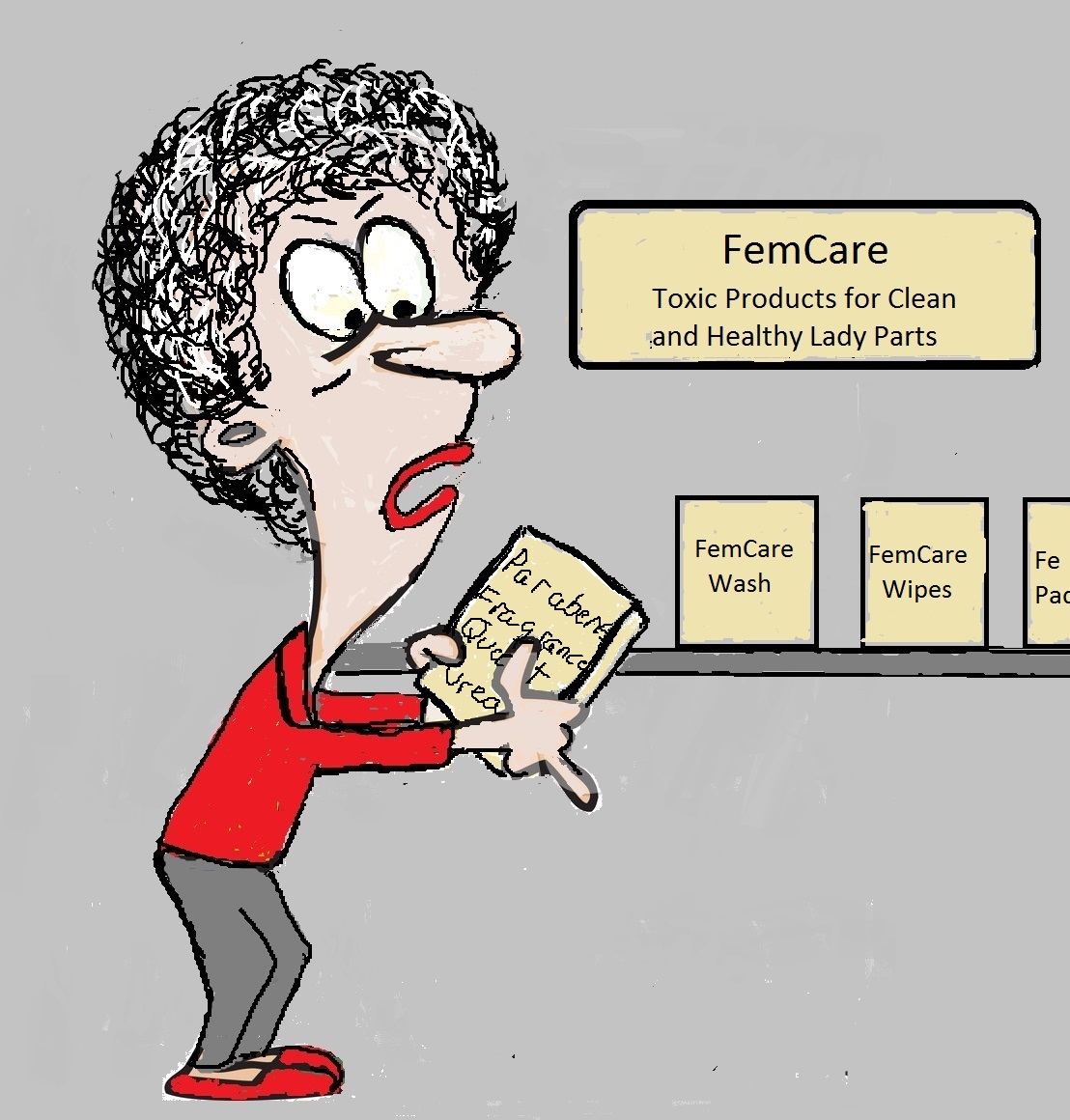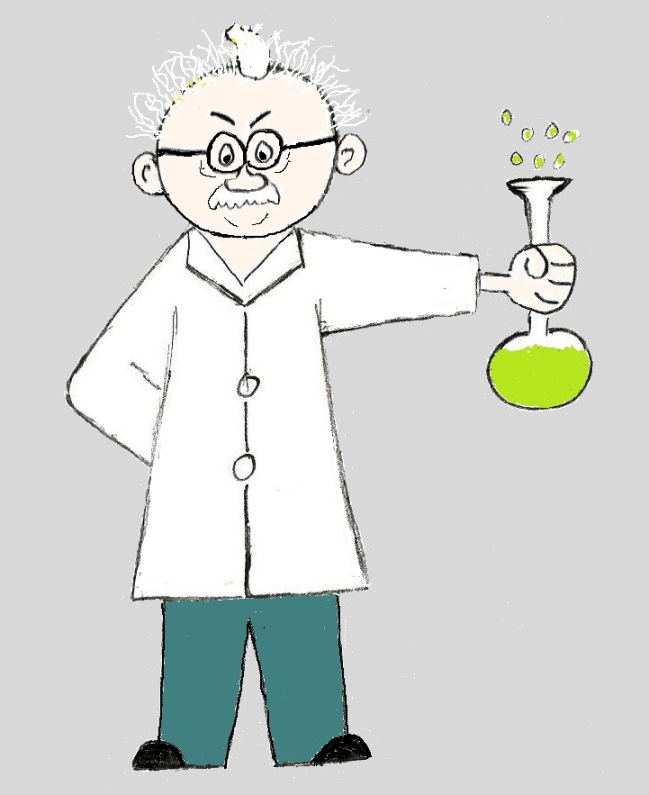- Home
- Toxic Chemicals in Personal Care
- Toxic Chemicals In Deodorant
Avoiding The Toxic Chemicals In Deodorant
Every day you slather on deodorant because smelling bad is not a good thing. But exposure to the toxic chemicals in deodorants is worse. And unnecessary.
The first step is learning which toxic chemicals you should avoid. The second step is accepting that it's OK to sweat. In other words antiperspirants are out.
And the third step is getting to know your pits. These steps will help you find less toxic options that work for you.
The Toxic Chemicals in Deodorant and Antiperspirant
Deodorants and antiperspirants control pit odor in three ways. One way is by blocking bacterial growth with antibacterial chemicals like Triclosan. Another approach is using odor masking fragrance chemicals to cover pit odors. And the third way is by reducing perspiration by using inorganic aluminum salts, that work by clogging sweat ducts.
The following list of toxic chemicals are used in these 3 approaches.
Aluminum Salts
Up to 30% of an antiperspirant can be aluminum salts. That means applying
antiperspirant once a day can expose your skin to between 3.3 to 15.7
milligrams of aluminum.
One study found that the aluminum salts in spray antiperspirant penetrates your skin at a rate of 0.65%, roll-on at 0.18% and nearly 1% is absorbed from stick deodorants.
Europe’s Federal Institute for Risk Assessment has stated that, with the daily use of aluminum- containing deodorants, your exposure is above the tolerable weekly intake of 1 mg of aluminium per kilogram of body weight. This exposure level is important because aluminum is a known neurotoxin that is also linked to prostate cancer, and Alzheimer’s Disease.
And although there’s no agreement on this, some researchers believe aluminum salts in antiperspirant may cause breast cancer.
They believe this because the area in which breast cancer occurs with above average frequency, lies nearest to the armpit. And, in contrast to the rest of the glandular tissue of the breast, is particularly exposed to deodorants.
Also, higher aluminum concentrations have been measured in human breast tissue than in blood. And aluminum exposure in breast tissue causes inflammation and damage to DNA, both of which can lead to cancer.
Fragrance
A "fragrance" is typically a mixture of several dozen to several hundred chemicals. About 80%-90% of scents are synthetic. And since the specific concoction of chemicals don’t have to be listed on the label. That means you don’t know what specific chemicals you’re exposed to.
Exposure to fragrances has been associated with a range of health effects, including allergic contact dermatitis, asthma and asthmatic exacerbations, headaches, and mucosal symptoms. Commonly used fragrance ingredients, like lilial and limonene, are linked to endocrine disruption.
Fragrance chemicals are also released into your home’s air. In fact, they are considered a major source of indoor air pollution. Studies on fragranced products found that each type of product tested, including deodorant, emitted at least one hazardous air pollutant.
Fragrance chemicals like limonene and pinene also react with ozone in your homes air to create formaldehyde, a known carcinogen.
To avoid exposure check labels for: limonene, a-pinene, lilial, eugenol, fragrance, aroma, parfum.
PEGS (polyethylene glycol) and PPG (polypropylene glycol)
PEGS and PPG are used to create foam and keep ingredients from separating. They are a health risk because they are often contaminated with cancer-causing chemicals like 1,4-dioxane.
Contaminates are toxic residues left behind from the manufacturing process. 1,4-dioxane is a contaminate in almost half of all cosmetics and can be absorbed through the skin in toxic amounts. It’s an unwanted byproduct of a processing method called ethoxylation used to reduce the risk of skin irritation from petroleum-based ingredients, like PEGS and PPG.
Studies have found 1,4-diozane in about half of all personal care products.
To avoid exposure check labels for: sodium laureth sulfate, polyethylene glycol (PEG)-polypropylene glycol (PPG), Polyoxyethylene, dimethicone and chemicals that include the clauses xynol, ceteareth and oleth.
Phthalates
Phthalates are used to help cosmetics penetrate skin and as emulsifiers that keep ingredients from separating. They are also used as carriers for fragrance chemicals. They can be absorbed through your skin and released into your air and settle in dust.
Diethyl phthalate (DEP) is a common phthalate found in deodorants, often at high levels. Bis(2-ethylhexyl) phthalate (DEHP) has also been found in deodorant. Low molecular weight phthalates like DEHP and DEP cause endocrine disruption, allergies and contribute to asthma. DEHP is also a probable human carcinogen.
Because they are endocrine disruptors, phthalate exposure is linked to inflammation, insulin resistance, obesity and thyroid disease. Exposure during pregnancy and in young children may result in the abnormal development of reproductive organs.
Phthalates don’t appear on the label so look for products labeled “phthalate free” and “fragrance free”
Propellants Used in Spray Deodorants
There are several types of propellants used in spray deodorants. They are all hydrocarbons found in petroleum products.
The most common hydrocarbons found in spray deodorant are butane, isobutane and propane. There are usually 2 different types in each spray deodorant.
All three can irritate your skin, eyes and lungs. They are also allergens and are toxic to your organs and immune system. The biggest concern about exposure to these hydrocarbons is that they can be contaminated with Butadiene, a known carcinogen.
The best way to avoid these propellants is by not using spray products of any kind.
Siloxanes
Siloxanes are
silicone-based compounds that are generally used for their softening,
smoothing, and moistening action. They make products like deodorants slide on
more easily.
The most commonly used types of siloxanes used in personal care products like deodorant are octamethylcyclotetrasiloxane (D4), decamethylcyclopentasiloxane (D5) and dodecamethylcyclohexasiloxane (D6).
A big concern is that the amount or concentration of siloxanes in deodorant is very high, up to 70% in deodorants. Especially D5, which in one study averaged 142 milligrams per gram of deodorant.
This study also found that of the 51 personal care products tested the main contributor to total maximum skin exposure of siloxanes was a non-spray deodorant/antiperspirant. This deodorant would expose you to 7.6 milligrams of D4 and 538 milligrams of D5 every day.
Not much is known about the toxic effects of long-term exposure to low concentrations of siloxanes, as they first emerged as a priority environmental pollutant in 2010. But it is known that the least safe are cyclic siloxanes like D4, D5 and D6.
Research has found that D4 and D5 are persistent in the environment, meaning they don’t break down or decompose. That means they can accumulate in your body.
Also, animal tests link D4 to reproductive impairment, liver changes, and benign uterine tumors, and show it may be an endocrine disruptor. D5 is associated with uterine cancers and adverse reproductive, neurological, and immune effects. AlthoughD6 doesn’t appear to accumulate in your body, It’s linked to liver and thyroid enlargement, and reproductive issues.
To avoid exposure check labels for: Dimethicone, polymethylsiloxane, cyclopentasiloxane, cyclomethicone, cyclotetrasiloxane, cyclohexasiloxan, Trisiloxane or any other ingredients that end with the word siloxane.
Tips For Avoiding The Toxic Chemicals in Deodorant
Accept That It's OK To Sweat
Most deodorants are also antiperspirants. Antiperspirants use aluminum chlorohydrate and aluminum zirconium to stop you from sweating by blocking the sweat glands in your pits. Besides the toxicity of aluminum exposure, antiperspirants disrupt an important body function.
Because sweating is one way your body cools you when it's hot. And, while there is disagreement on this in the scientific and medical community, some research suggests sweating also releases some of the toxins in your body.
For example, sweat is a major way your body excretes aluminum. But aluminum is used in antiperspirants to keep you from sweating!
Numerous studies have also found heavy metals like arsenic, cadmium, lead, and mercury (all of these are carcinogens) are excreted from your body in sweat. The endocrine disruptors BPA and phthalates have also been measured in the sweat of study participants.
And you don’t need to worry about lots of yellow pit stains on your cloths. Sweat is a colorless liquid, so it can’t possibly cause staining even on light colored clothes. Pit stains are actually caused by the reaction of the aluminum in antiperspirants with sweat.
Get To Know Your Pits
While it's OK to sweat it's not OK to smell bad. Your sweat is odorless. Body odor occurs when the bacteria on your skin begins to break down the protein and fatty acids in your sweat.
And the types of bacteria sweat encounters determines your body odor. There are two main types of bacteria that colonize your pits, Staphylococci and Corynebacteria. The amounts of each type of bacteria varies from person to person.
Corynebacterium are associated with the dominant odors of the armpits. If you have higher levels of Corynebacterium you’re likely to have stronger body odor. Since your pit microbiome (the different kinds of bacteria) is unique to you you’ll have to experiment to find a less toxic deodorant.
What works for other people might not work for you. You’ll need safer ingredients that have antibacterial properties, things like coconut oil and tea tree oil.
And if your Corynebacterium levels are lower and you’ve never had a BO problem you can probably control odor with very few ingredients. My one ingredient at a time approach to homemade deodorant would be a good option.
Some people get a rash while trying out less toxic deodorant options. It’s usually from deodorants that include baking soda. If you get a rash try deodorants that use arrowroot powder instead.
Don't Be Fooled By Labels That Include Natural or Organic
Some deodorants announce proudly on their labels that they are natural or organic, but don't be fooled by these claims. There are no regulations on how these words can be used.
A great example is Arm & Hammers Essentials Natural Deodorant. There is nothing natural about it. It's one of the few deodorants that still contains triclosan, a pesticide and possible carcinogen, and fragrance chemicals.
Some ingredients also don't show up on the labels. You won't find phthalates or limonene (this reacts with ozone in the air to create formaldehyde, a carcinogen) on the ingredient list.
Also, many products that are labelled green may be as dangerous to your health as regular products. One study found that 80% of the most common VOCs emitted from personal care products are the same between green and regular products, including those that are classified as toxic or hazardous.
And, of the 17 green products they tested, 7 emitted at least one cancer-causing air pollutant. Bottom line is you have to read ingredient lists.
Avoid the toxic chemicals in deodorants listed above. Look for products with simple, nontoxic or less toxic ingredients.
The typical ingredients found in safe deodorants include baking soda or arrowroot powder, coconut oil, beeswax, shea butter, witch hazel, and aloe vera.
Deodorants Without Toxic Chemicals
Here are a few suggestions for effective, nontoxic deodorant options.
Another nontoxic option would be to make your own deodorant. It's very simple. Click here to learn how.








